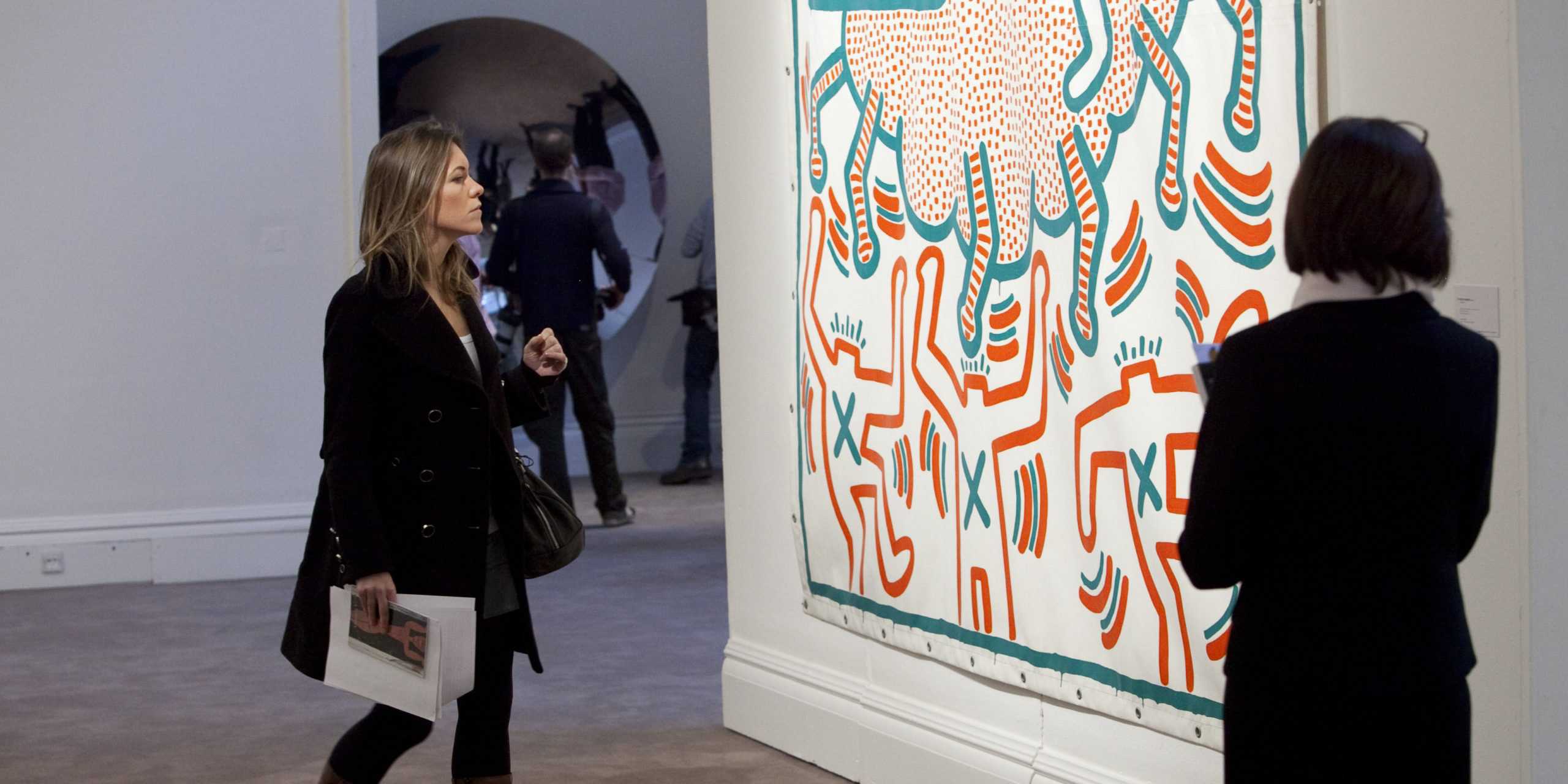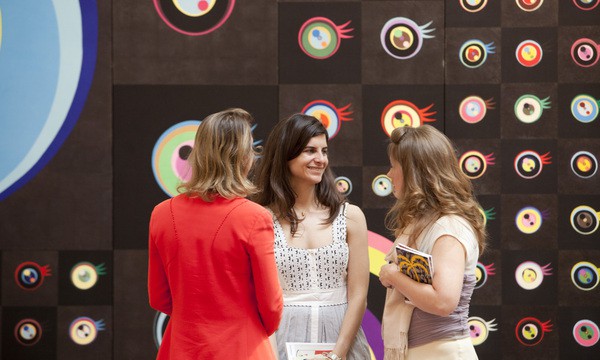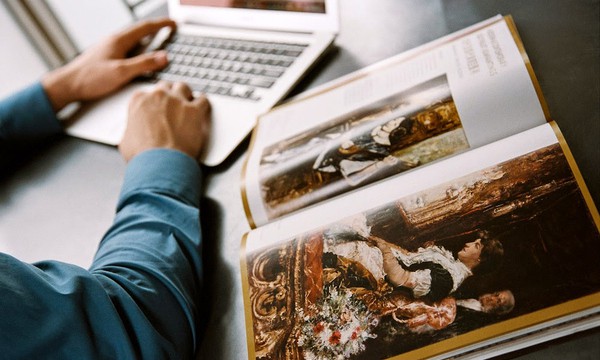Are you captivated by art and eager to shape the way it’s experienced by others? It’s the curator’s job to do exactly that. Art curators are responsible for curating exhibitions, finding pieces for collections, researching their subject matter, and sharing their insights with the public. While artists tend to be in the limelight, curators work behind the scenes to progress the way we view, understand, and appreciate art.
Curators can be powerful cultural movers-and-shakers who can bestow recognition and even fame on artists and art galleries. For this reason, being a curator can involve a lot of responsibility, and curating is a highly competitive career choice.
It’s important to understand what’s involved in the job and the choices you can make to stand out as you take your first steps in your curation career.
What Does an Art Curator Do?
An art curator’s job is multi-faceted — it involves research, planning, and excellent communication skills when working with artists, art experts, and the general public. Their primary responsibilities include:
Curating exhibitions
Art curators plan and organize art exhibitions at museums, galleries, and other institutions. They select and arrange artworks to create narratives that provide an engaging experience for visitors. An eye for detail and impeccable planning skills are essential for this facet of the curator’s job.
Acquiring artworks
Curators at collecting museums and institutions are responsible for managing collections and acquiring new artworks. “Curators are charged with researching and identifying key artworks by artists that reflect their institution’s current collecting focus. It’s the curator’s job to formally present the work to the institution within the context of the institution’s mission and once approved, pursue the purchase and intake of the new work,” says Kate McNamara, Online Faculty for Introduction to Curating at Sotheby’s Institute of Art.
“Most collecting museums will have annual collection exhibitions, which are an opportunity for curators to build thoughtful relationships between works in the collection that speak to the current moment.”
Research and interpretation
Art curators research and analyze artworks to provide interpretation for the public. They may also write catalog essays, wall texts, or create multimedia content to aid the visitor’s understanding of the art. As well as being an effective writer, curators are expected to be up to date on developments in art theory and history.
Public engagement
Curators engage with the public through lectures, workshops, and guided tours. It’s important that curators share their knowledge and foster a connection between the audience and the art. Curators often act as spokespeople for museums and art galleries, teaching the public important lessons and sharing stories that shape the reception of art in the public imagination. Being an effective communicator means adapting a story or message to the audience, be they fellow art experts, museum trustees, or the public.
Administrative Tasks
Curators are responsible for a slew of administrative tasks in addition to their curatorial duties. “Putting together an exhibition certainly involves a range of creative and in-depth scholarship, but it also includes a number of organizational demands, like organizing the shipping of artwork, getting fabrication quotes, running budgets, and producing consignment forms for loans. These tasks are not as exciting as the artist collaborations but are essential to making an exhibition happen,” says McNamara.
How Do You Become an Art Curator?
Firstly, Cultivate an Understanding of Art History and Related Fields
A successful art curator must have a knowledge of art history and the ability to analyze and interpret many forms of art. Start by earning a bachelor’s degree in art history, fine arts, or a related field. A degree will provide you with the foundational understanding necessary for this career. Also consider taking courses in related fields like museum studies, cultural studies, or anthropology.
Step 2: Get Relevant Experience
Hands-on experience is indispensable for aspiring art curators. Look for internships or volunteer roles at museums, galleries, or other cultural institutions. These positions will enable you to gain experience in curation, collection, and public programming. Internships and volunteering will help you hone your skills while creating connections with professionals in the field.
Step 3: Pursue an Advanced Degree
While a bachelor’s degree is an excellent starting point, many curator roles require a master’s degree or higher, especially if you intend on working at a museum. Graduate programs will offer you a more comprehensive understanding of art history, critical theory, and curatorial practices. Many programs feature specialized tracks where you can focus on specific areas of interest.

Interested in learning more about art curation? Explore our short courses, offered in New York, London, and online.
Step 4: Establish a Professional Network
Making connections within the art world is vital to your success, especially once you begin looking for positions in the field. Take part in conferences, workshops, and other events to network with industry professionals. Also consider becoming a member of professional organizations, like the Association of Art Museum Curators (AAMC). This can help you stay informed about industry trends, job opportunities, and networking events.
Step 5: Compile a Portfolio and Resume
A well-crafted portfolio and resume will showcase your achievements, experiences, and abilities in the art world. Include examples of exhibitions you’ve curated or contributed to, as well as any published research or articles. Make sure that your resume emphasizes your education, professional experience, and any unique skills, such as proficiency in a foreign language or grant writing expertise.
Step 6: Apply for Curatorial Roles
With your education, experience, and professional network in place, you’re ready to pursue curatorial positions. Be prepared for a competitive job market and consider applying for assistant curator or other entry-level roles to get your foot in the door. Check job boards, museum websites, and organizations for listings, and make sure to use your network as a resource.
Becoming an art curator requires passion, determination, and a dedication to learning and professional development. By following these steps and refining your skills and knowledge, you’ll be well on your way to a fulfilling career in the art world. Remember, having a curious mindset, expanding your network, and staying up to date on industry trends are the key ingredients for success.
Looking to build a career in the art world? Explore our short courses and professional programs.

Master's Degrees
Experience our Master’s degrees in London, New York City, or Online. Gain in-depth knowledge of the art world and powerful professional skills. Benefit from lectures, site visits, and workshops with leading scholars and professionals to build a global network and excel in the art world.
Learn More
In-Person Courses
Explore short courses that have been carefully curated for your learning goals and specialize in popular and relevant topics. Choose from one-day sessions to 12-week programs in London, New York City, and select art world capitals.
Learn More
Online Courses
Access the art world with our expert-led Online courses. Connect with students worldwide and stay updated on global art scenes, all at your own pace. These instructor-led courses, ranging from two to eight weeks, are perfect for enhancing your skills or advancing your career.
Learn More